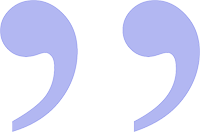
Keeping your most advanced students busy can be a real challenge.
As they reach a higher level, and gain more confidence, there’s a tendency for there to be an ‘end of semester’ feel to the group, even at the beginning of one. To keep things fresh, especially if you’re teaching from a textbook which is proving relatively easy for your class, consider adding in new content to stretch your students’ abilities. This may or not be part of the syllabus, and it doesn’t necessarily have to relate to what’s on the exam; it’s learning for its own sake, and for the benefit of skilled, motivated students who tend to enjoy the sense that you’re deliberately taking their abilities out for a spin.
One good place to start, before deciding on extra elements to include, is to carry out a careful needs assessment. Alternatively, you may know your students well enough to be a good judge of what they need, what will be relevant to their professional lives, and what they’ll most enjoy. I’ve been known to bring in a mix of the following:
9 Types of Challenging Content for Advanced ESL Students
-
1
Idioms and Slang
A few 10-15 minute sessions on highly idiomatic expressions can introduce a really colorful and convincing element to their speaking.Advanced students are striving to sound more like a native speaker, and a few 10-15 minute sessions on highly idiomatic expressions can introduce a really colorful and convincing element to their speaking. When deciding which expressions to teach, one good way is to make a note, over the course of a few days, of all the slang expressions you hear around you (including those you use yourself). When I did so, I had a list of nearly sixty expressions, and chose twenty to teach my class over the course of two weeks, including:

- To close the stable door after the horse has bolted
- To be at my wits’ end
- To be driven up the wall (by something)
- To have lost one’s marbles
- To be caught between a rock and a hard place
These proved as useful to my students for expressing themselves as they did for understanding what others were saying; odd, highly particular idioms which had previously gone over their heads now became an everyday part of their lexicon.
-
2
Phrasal Verbs
These are also idiomatic expressions which can be perplexing to a student. Typically, they are formed from at least one verb and one or more prepositions (e.g. ‘take off’, ‘push through’, ‘be put upon by’, ‘take [good] care of’, etc). Focusing on these expressions for a few minutes each class, or every other class, and ensuring solid practice and review, can really help expand your students’ self-expression. I heartily recommend The Ultimate Phrasal Verb Book as a text. I also recommend that you only teach a maximum of 3-4 phrasal verbs in each session, as many of them have multiple uses and meanings, so that things can quickly become bewildering.
I recommend that you only teach a maximum of 3-4 phrasal verbs in each session, as many of them have multiple uses and meanings, so that things can quickly become bewildering.
-
3
Expanded Vocabulary
Like idioms and phrasal verbs, advanced vocabulary could be the focus of a special, short session every now and again. Alternatively, you could keep an ear open for opportunities to drop some ten-point words, and encourage your students to do the same. Oddly enough, I’ve found that teaching advanced vocabulary is actually easier than presenting the more routine words; my students already have good grounding in how English words are built, and in many cases, their own first languages (particularly Spanish, but also the other European languages) is a huge boost to their ability to guess meanings.
Think about the most common words – especially adjectives and verbs - and write a list of other, more nuanced ways to say the same thing. If an object is ‘big’, it could also be ‘gigantic’, ‘enormous’, ‘colossal’ or ‘huge’. If a book is person is ‘famous’, they might also be ‘celebrated’, ‘noted’, ‘notorious’ or ‘respected’. We can ‘get’ lunch, but we can ‘meet (up) for’, ‘arrange’, ‘sit down to’ and ‘schedule’ lunch, too. Take a few moments on the board to link advanced, interesting words and expressions to a main, common word, and give quick examples of how we use them. Then invite your students to do the same and, hey presto, you’ve expanded their vocabulary in a matter of moments.
-
4
Nuanced Grammar
I’m a huge fan of using very precise grammar, especially when it comes to tenses, modals and conditionals. I encourage my students to think carefully about this, drawing comparisons between different ways of expressing similar points.
Here’s an example which my American colleagues often overlook, due to a pervasive cultural bias against the perfect tense forms. I evangelize about them, and so I’d have no trouble teaching my students to say, “She’d been waiting for half an hour before her date arrived,” as a more colorful, vivid and pleasing method of saying, “She waited for half an hour before her date arrived”. I want to put the listener in mind of that slow, frustrating passage of time, and so I use the past perfect continuous form. It’s not to everyone’s taste, but it can sound awesome when accurately produced by a young student.
For conditionals, I’ve been known to teach the structure, “Had the conductor told us that the train was delayed, we’d have found a taxi”, as an elegant alternative to, “If the conductor had told us…”. I also love throwing in passive forms (though never to excess), so I’d happily teach, “Had we been informed that the train was delayed…”
It’s up to you. Some would claim that teaching subtleties and alternatives like this risks muddying the waters. I think it simply expands our students’ ability to say exactly what they mean, and provided it’s clearly taught, with good examples, and then solidly practiced and reviewed, there’s no danger of confusion.
-
5
Quotes and Cultural References

I believe that quotations such as, “Ask not what your country can do for you,” the unforgettable, if sadly very slightly misspoken, “That’s one small step for [a] man,” and the exhortation to our nation to, “Rise up and live out the true meaning of its creed,” all represent moments in the history of English, and of the world, which should find their way into the experience of any advanced student.
Great speeches are a gold mine of advice for those studying presentation skills, intonation and cadence, as well as the nuances of language. The cultural and historical context of a significant speech can also teach our students about those moments in which the world was changed. I don’t urge the memorization of these speeches, nor their recitation in competitions, but I do hope my students understand who gave them, who was listening, and why that particular use of language succeeded in changing so many lives.
-
6
Pronunciation and Accent Reduction
Once your Chinese students have progressed beyond needing help to correctly enunciate ‘th’, and your Arabic students aren’t rolling the ‘r’ sounds any more, it’s time to take things to the next level. Have them record their own speaking and carry out a dispassionate analysis. Then focus on those remaining sounds which differentiate their speaking from that of a native speaker.
-
7
Editing and Proofreading
My writing students are obliged to get used to an initially very strange act: reading the work of their peers. It’s obviously helpful, at any stage, to put what you’ve written in front of several pairs of eyes, but the act of editing someone else’s work can be very valuable in teaching analytical and proof-reading skills. The more a student encounters improvable texts, as well as native-level work, the more alive they will be to the importance of careful re-reading before submitting their own pieces.

-
8
Business Matters
One popular, new area for advanced students is the world of business. The Market Leader textbooks, among others, offer a good introduction for students who don’t have a business background. One method is to build one or two business-related topics into your weekly syllabus, though a poll of your students will reveal how useful this material is likely to be.
-
9
Advanced Error Correction
This final idea isn’t a type of content, as such, but an in-class teaching philosophy. Teaching professionals choose their error correction strategies carefully; too often, and we discourage experiment, but not often enough, and we permit inaccuracies (often due to the influence of L1) to become habituated.
At this stage of the language acquisition process, we’re interested in nudging ours students toward error-free English, so we can be a little more picky than before.
With advanced students, we can be less concerned that they will react negatively if we pull them up for a mistake, even in front of their friends and classmates. At this stage of the language acquisition process, we’re interested in nudging ours students toward error-free English, so we can be a little more picky than before. I believe that the best error correction is based on themes which shift, through the curriculum, based on the content to be learned. If we’ve just spent two weeks on modal verbs, I’m going to be quite strict if I hear mistakes in that area, but I’ll probably not stop a students’ flow in order to fix a tense problem, because that has a lower priority.
This thematic approach can continue, but you can choose smaller areas of focus, such as particular aspects of pronunciation, tendencies to use ‘stalling’ words or expressions (e.g. ‘like’, ‘in terms of’, ‘you know’, etc) and moments where a more advanced word might usefully replace an over-used one (e.g. ‘maybe’, ‘good’, ‘bad’, ‘difficult’ and even ‘said’, which can be replaced in many ways: insisted, replied, yelled, demanded, retorted…)
Advanced students can find themselves at a strangely precarious stage in their learning.
They could choose to take it easy and rest on their laurels, or they could push on toward true fluency and native-level language use. Refreshing your content, challenging your advanced students, and keeping an ear open for opportunities to correct errors, build vocabulary and encourage further improvement in pronunciation, can all help to motivate your students to continue their journey toward genuine fluency.
P.S. If you enjoyed this article, please help spread it by clicking one of those sharing buttons below. And if you are interested in more, you should follow our Facebook page where we share more about creative, non-boring ways to teach English.








